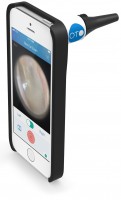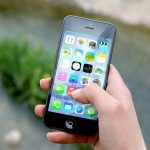The development of low-cost, high-quality smartphones is changing the way that patients and doctors communicate with one another. This new trend is the result of medical device companies teaming up with software developers to harness the innate processing power of smartphones and produce a variety of diagnostic and health monitoring information. Their efforts have led to the creation of mobile health devices that enable the more than 2.5 billion mobile phone users in the Asia Pacific region to communicate with doctors, self-diagnose ailments, and monitor vital signs such as blood pressure, heart rate and glucose levels.
Increased access to smartphones and the internet suggest that the mobile health market will enjoy a compound annual growth rate of more than 30% during the next four years. Allied Market Research values the global mobile health market at nearly $11 billion. With the number of mobile phone users in the Asia Pacific expected to grow from 2.5 billion to more than 3 billion in the coming years, mobile health technologies will become even more accessible. By taking advantage of these trends, medical device companies can tap into a growing market that is demanding better, cheaper healthcare services.
Mobile Health Capabilities
Mobile phone apps allow patients to easily track basic health data such as heart rhythms and blood pressure. Patients can buy portable blood pressure monitors, electrocardiogram (ECG) machines and blood glucose meters, and then use a physical cable or wireless Bluetooth system to send the results to their smartphone. The corresponding app then keeps track of a patient’s daily health data for personal use or can be used to send the results to a local physician for further review.
Medical device companies are also developing a wide range of diagnostic tests that will allow individuals to perform routine lab exams in the comfort of their own home. To use these devices, patients gather a small sample of their blood, sweat, urine or other fluid and place it into a small device that plugs directly into their smartphone. An application on the smartphone can then analyze the results and provide a basic analysis. Future developments will allow patients to have various nanodevices implanted in the body or dispersed into their blood stream. These new technologies will allow patients to have even greater awareness of their body’s medical needs and could help them decide if they need to visit a doctor for further consultation.

Another use of smartphones allows people to take pictures of their ailments, injuries or concerns and then send them to a trained physician who will provide advice. These pictures and videos can be used in tandem with telemedicine services to allow doctors to diagnose and potentially treat patients remotely. The San Francisco-based CellScope is currently marketing OtoScope, a device that attaches to a cell phone camera and allows parents to peer into their child’s inner ear. The device enables parents to send high-quality pictures to trained physicians who then determine if the child is suffering from an ear infection.
Opportunities for Western Device Companies
A number of western companies are already blending their knowledge of medical devices with smartphone technology to produce new mobile health devices for Asian markets. Boston Scientific, Bayer Healthcare and Omron HealthCare are just a few of the large multinationals that have a considerable presence throughout the Asian market and are leveraging their experience to expand.
Bayer Healthcare has released smartphone apps that help patients keep track of their prescriptions and dosage schedules. The myBETAapp helps patients remember when they have taken medications, while Factor Track reminds people with hemophilia when to infuse blood. In addition to marketing its own mobile health products, Philips Healthcare partnered with the Indonesian Reproductive Science Institute to help reduce the country’s infant mortality rate. Through this program, Philips provided local midwives in rural areas with the technology that allowed them to collect data from pregnant patients and send it to trained physicians for further analysis. These data collection and monitoring programs are invaluable tools to patients in emerging countries where treatable ailments or problems go undiagnosed and lead to serious health complications.
Smaller companies are also entering the Asian mobile health market. iHealth Labs (Mountain View, CA) has begun marketing its patented glucometer and portable blood pressure monitors in Japan. These small devices read patients’ blood glucose or blood pressure levels and then send the data to their cell phones. Patients can then keep track of their own statistics or send them to their physician. LifeScan (Milpitas, CA) has also developed similar products targeted at diabetes patients and is marketing throughout advanced East Asian countries as well as emerging markets in Southeast Asia.
Asian Companies Take Advantage of Mobile Health Technologies
Local Asian universities and companies are also looking to capitalize on the fast proliferation of mobile phones throughout the Asia Pacific. In Japan, researchers at Kumamoto University and Tokyo Medical University are collaborating on a sensor and smartphone system that will help individuals who suffer from epilepsy to prepare before they have a seizure. They have developed a sensor that is worn near the heart and detects when nerve cell activity changes. The device sends an advanced warning to a connected mobile phone that can help individuals prepare for a seizure by giving them time to put themselves in a position where they won’t hurt themselves.
In China, the company FinlTop Biology (Beijing) is producing smaller versions of large diagnostic machines that patients can use in their home. Its flagship product is a small electrocardiogram device. Users hold the device and press their thumbs into two metal sensors that then detect their heartbeats. As with other devices, the corresponding app records the data and users can privately review the information or forward it along to their doctors.

Other mobile health devices are being developed throughout Asia that combine existing medical technologies with smartphone apps to reduce healthcare costs for patients. Singapore in particular has emerged as a hotbed for mobile health devices, with local doctors developing apps such as ScolioTrack, which tracks the progression of scoliosis. Connected Health, a system of Bluetooth connected devices that compiles information into one convenient location, has also emerged as a leading provider of mobile health technologies.
Asia Needs Mobile Health Technology
The rapid spread of affordable mobile phones throughout Asia is fueling the rise of mobile health, but governments are also taking note. With a rapidly aging population, Japan is looking to expand mobile health technology to ease the burden of growing healthcare costs. Tokyo has already allowed some patients to renew prescriptions via video calls and is eying new mobile health opportunities. China’s increasingly wealthy population is also demanding better access to doctors and improved hospital care. China’s Ministry of Health is currently investing more than $64 billion dollars into hospitals to improve electronic health monitoring systems.
Emerging economies such as Indonesia, Thailand and Malaysia are also encouraging the development of low-cost mobile technologies that will give low-income individuals better access to the information and advice they need when they are suffering from disease or poor health.
The spread of smartphones and the demand for improved medical services presents ideal opportunities for medical device, healthcare, software and technology companies. Medical device companies should take advantage of this growth potential and expand their operations in Asian markets eager for the low cost healthcare services that smartphone technology can provide.






